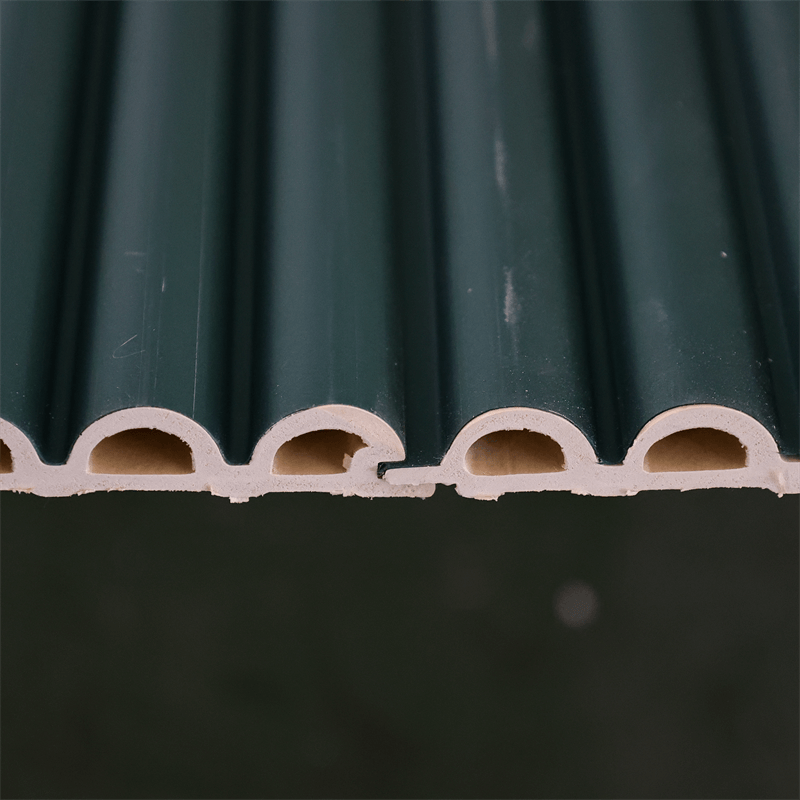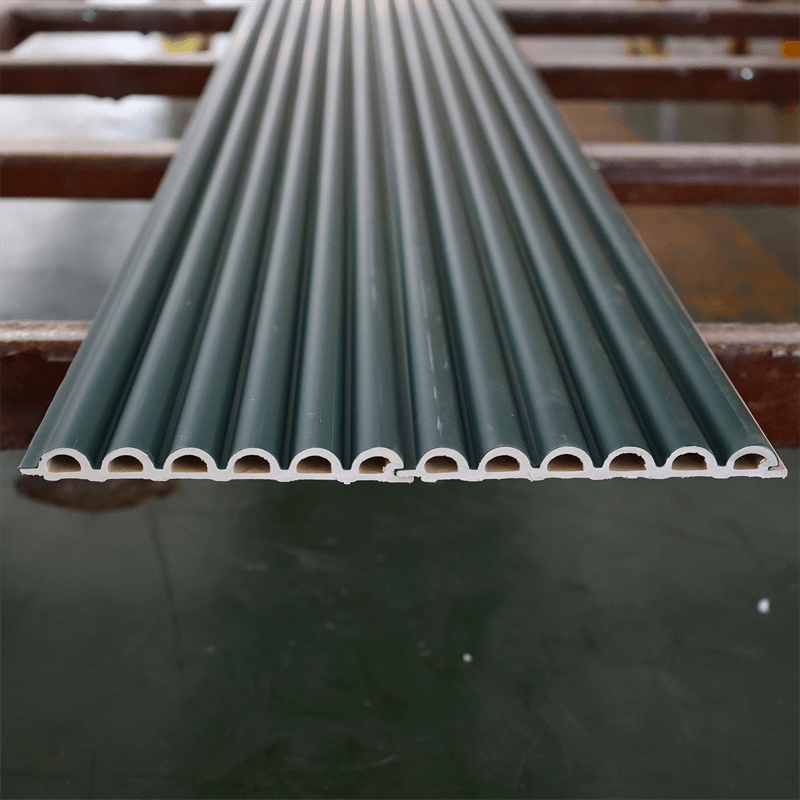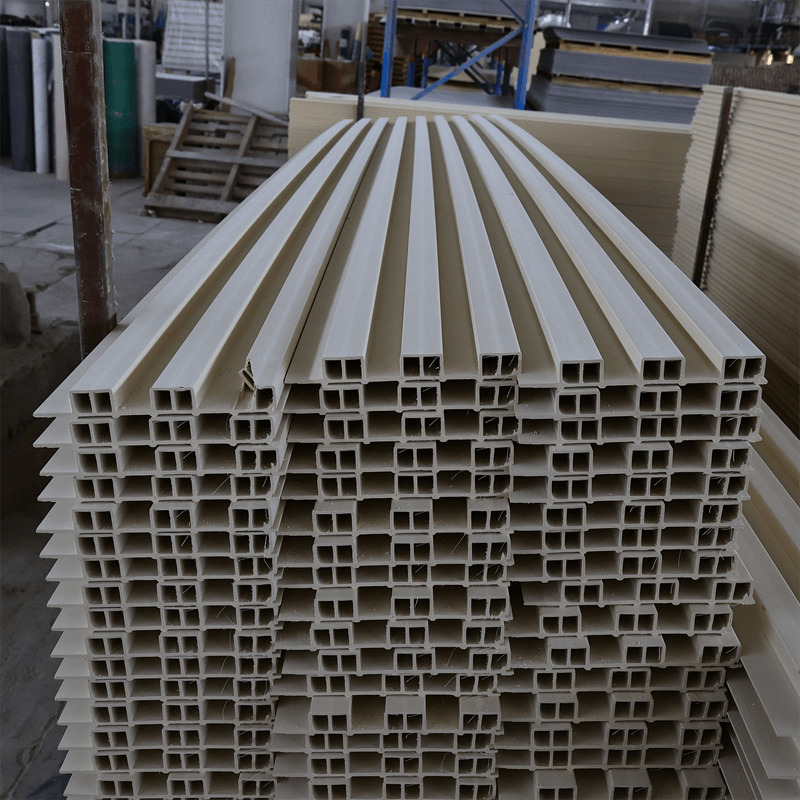
In the pursuit of sustainable and long-lasting construction materials, Wood Plastic Composite (WPC) wall panels have emerged as a formidable contender.
Combining the natural beauty of wood with the resilience of plastic, WPC panels have become a popular choice for interior and exterior design projects.
One of the key factors that contribute to the longevity of WPC wall panels is their waterproofing technology.
In this article, we explore how waterproofing enhances the durability of WPC wall panels, making them resistant to water damage,
decay, and environmental stresses, and consequently extending their lifespan for generations to come.
Repelling Moisture: The Role of Waterproofing in WPC Wall Panels
Hydrophobic Additives: Keeping Water at Bay
At the heart of WPC wall panels’ durability lies their resistance to moisture.
The integration of hydrophobic additives during the manufacturing process plays a crucial role in repelling water.
These additives create a protective barrier on the surface of the panels, causing water to bead up and roll off rather than being absorbed.
As a result, WPC panels remain unaffected by water-related issues such as swelling, rotting, and warping, ensuring their structural integrity remains intact over time.
Preventing Mold and Mildew Growth
Moisture-prone environments are breeding grounds for mold and mildew, which can compromise not only the appearance but also the health and hygiene of indoor spaces.
Waterproofing in WPC wall panels prevents moisture from penetrating the material, thereby inhibiting the growth of mold and mildew.
This safeguard ensures that WPC panels maintain a clean and healthy environment, making them suitable for areas with high humidity, such as bathrooms and kitchens.

Enduring Harsh Weather Conditions
UV Resistance: Protecting Against Sun Damage
Exposure to ultraviolet (UV) radiation from the sun can cause discoloration and fading of building materials over time.
In outdoor applications, WPC wall panels are exposed to the elements, making UV resistance a crucial factor in their longevity.
Manufacturers often apply UV-resistant coatings to the surface of WPC panels, safeguarding them from sun damage and ensuring their vibrant colors and pristine appearance are preserved.
Temperature Fluctuations: Withstanding Environmental Stresses
WPC wall panels need to withstand temperature fluctuations, especially in regions with extreme weather conditions.
The waterproofing technology in WPC panels minimizes the impact of these fluctuations, as the hydrophobic additives prevent water from seeping into the material and causing expansion or contraction.
This property ensures that the panels remain dimensionally stable and resilient, even in challenging weather environments.
Impact Resistance: Preserving Aesthetics and Structure
Withstanding Mechanical Impact
In high-traffic areas or spaces prone to accidental impact, such as commercial establishments or children’s playrooms, WPC wall panels need to withstand mechanical stress.
The waterproofing technology in WPC panels enhances their impact resistance, protecting them from scratches, dents, and other surface damages.
This durability preserves the panels’ aesthetics and extends their lifespan, making them a reliable choice for busy and dynamic spaces.
Resistance to Chemicals and Stains
Waterproofing not only shields WPC wall panels from water but also from various chemicals and stains.
The hydrophobic nature of the panels prevents chemical agents from penetrating the material, minimizing the risk of discoloration or deterioration.
This resistance to chemicals and stains ensures that WPC panels retain their original appearance and finish, even in environments where exposure to such substances is prevalent.

Low-Maintenance Living: The Longevity Factor
Easy Cleaning and Maintenance
The waterproofing capabilities of WPC wall panels contribute to their low-maintenance nature.
Unlike traditional wood or non-waterproof materials that require regular sealing, staining, or painting, WPC panels only need routine cleaning with mild soap and water.
This simplicity in maintenance saves time, effort, and resources, while also prolonging the lifespan of the panels by preventing the build-up of dirt and grime.
Long-Term Investment
The durability and extended lifespan of WPC wall panels translate into a long-term investment for homeowners and commercial property owners.
Choosing WPC panels not only reduces the frequency of replacements but also minimizes the need for maintenance and repairs.
By maximizing the durability of WPC panels through waterproofing, property owners can enjoy a reliable and aesthetically pleasing wall cladding solution that stands the test of time.
Wood Plastic Composite (WPC) wall panels exemplify the perfect marriage of natural elegance and modern durability.
The incorporation of waterproofing technology sets these panels apart, making them highly resistant to moisture, UV radiation, mechanical impact, and chemical exposure.
Waterproofing in WPC wall panels ensures that they remain structurally intact and aesthetically appealing for extended periods, even in harsh weather conditions.
Moreover, the low-maintenance nature of WPC panels reduces the need for frequent replacements and repairs, making them a cost-effective and sustainable choice for interior and exterior design projects.
With their remarkable ability to repel water and withstand environmental stresses, WPC wall panels offer a long-term investment that adds value to any space.
As the construction industry continues to embrace sustainable and durable building materials,
the popularity of WPC wall panels is poised to grow, transforming living and commercial spaces with their resilience and aesthetic charm for generations to come.
